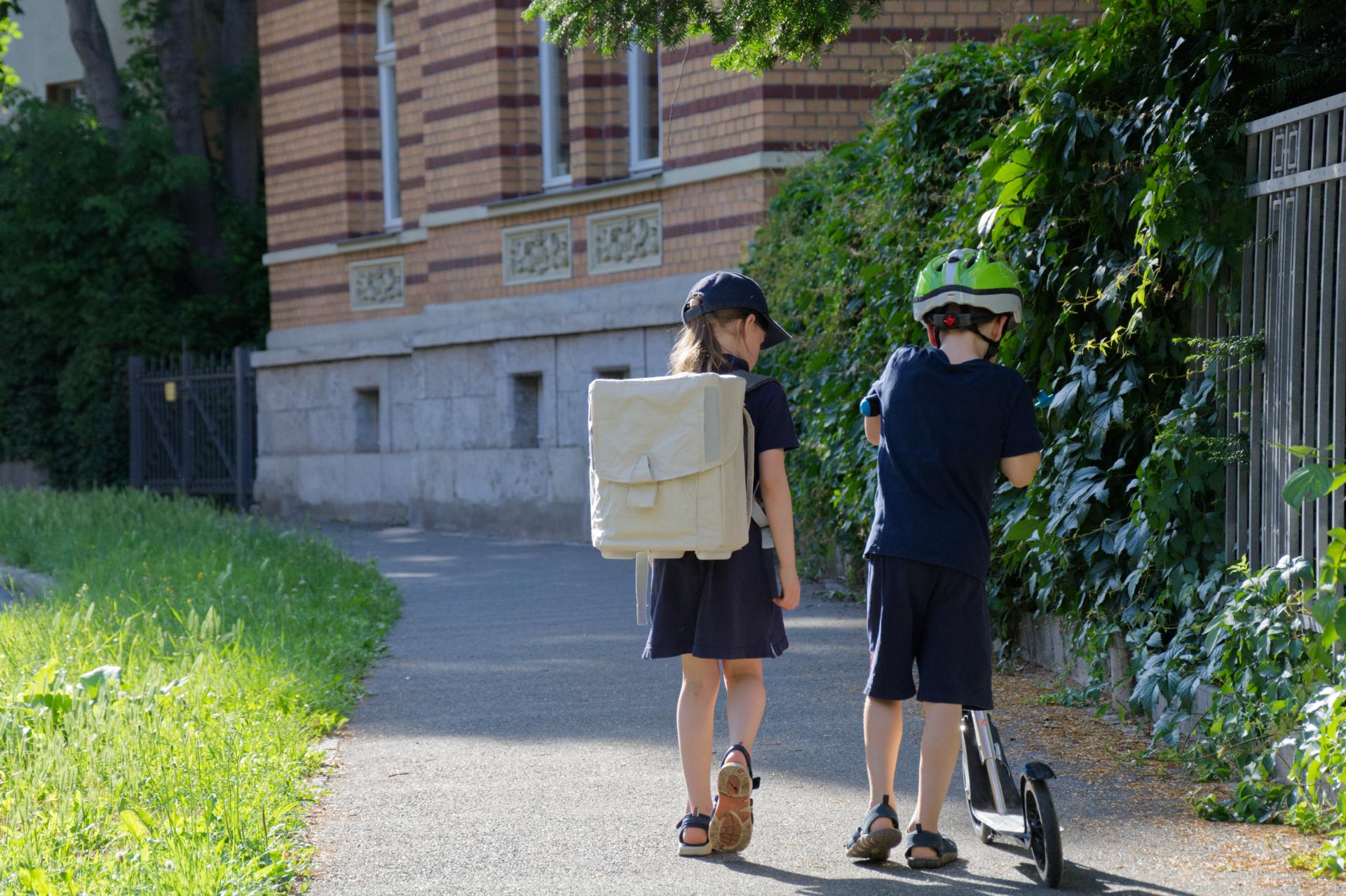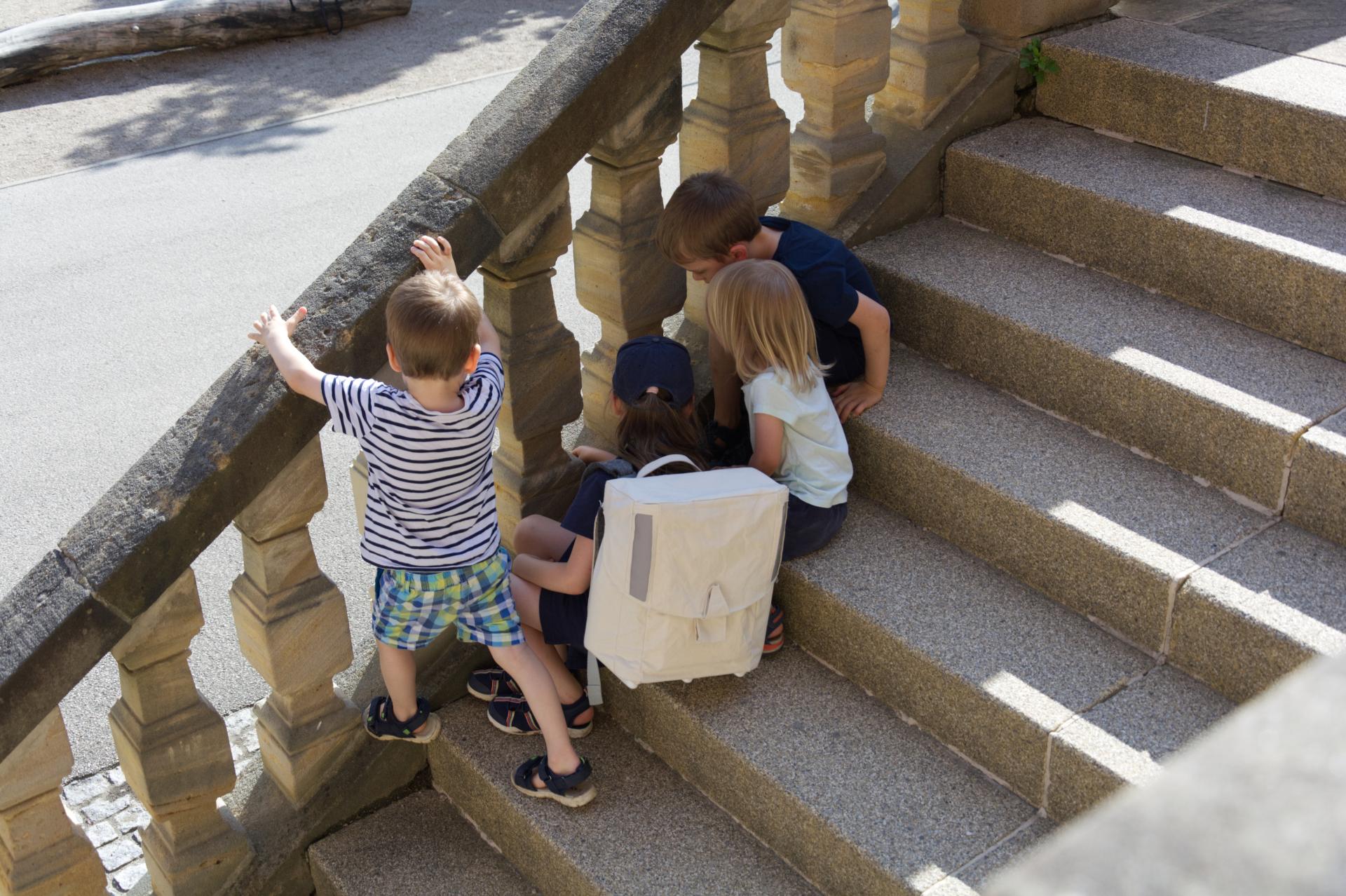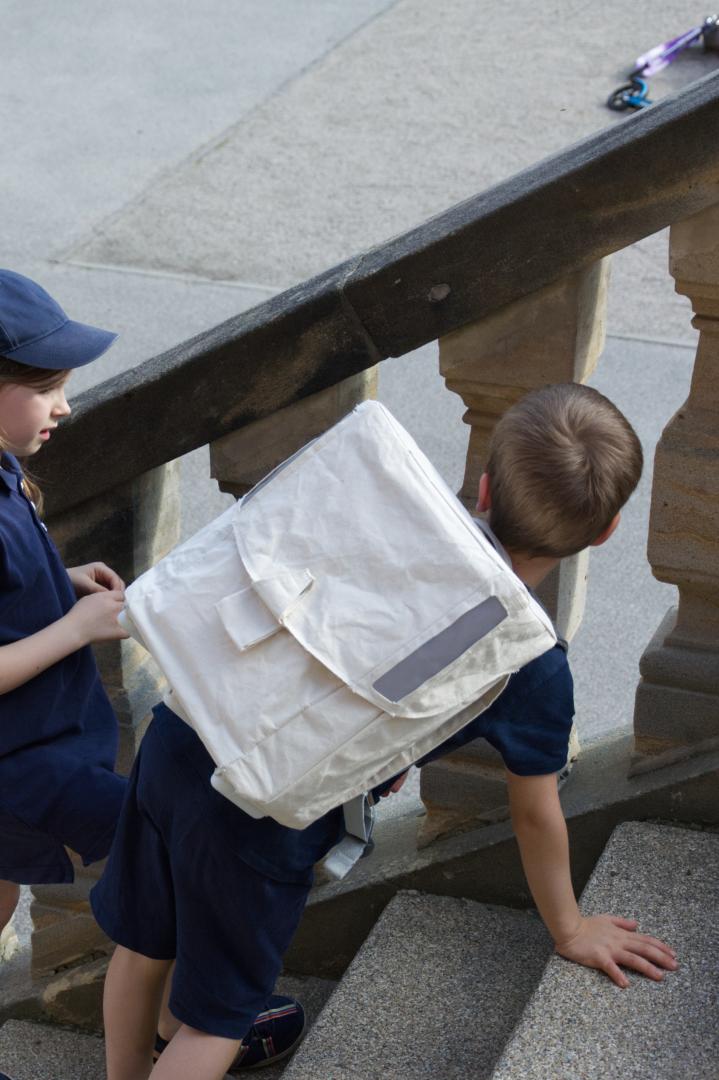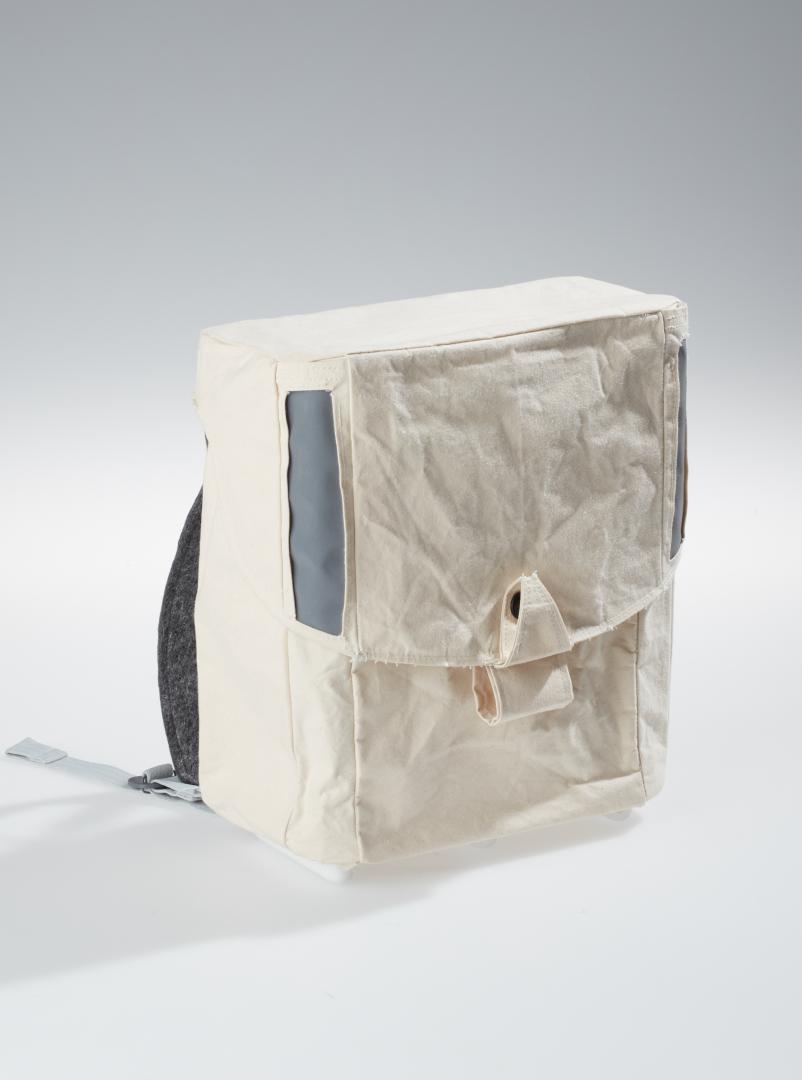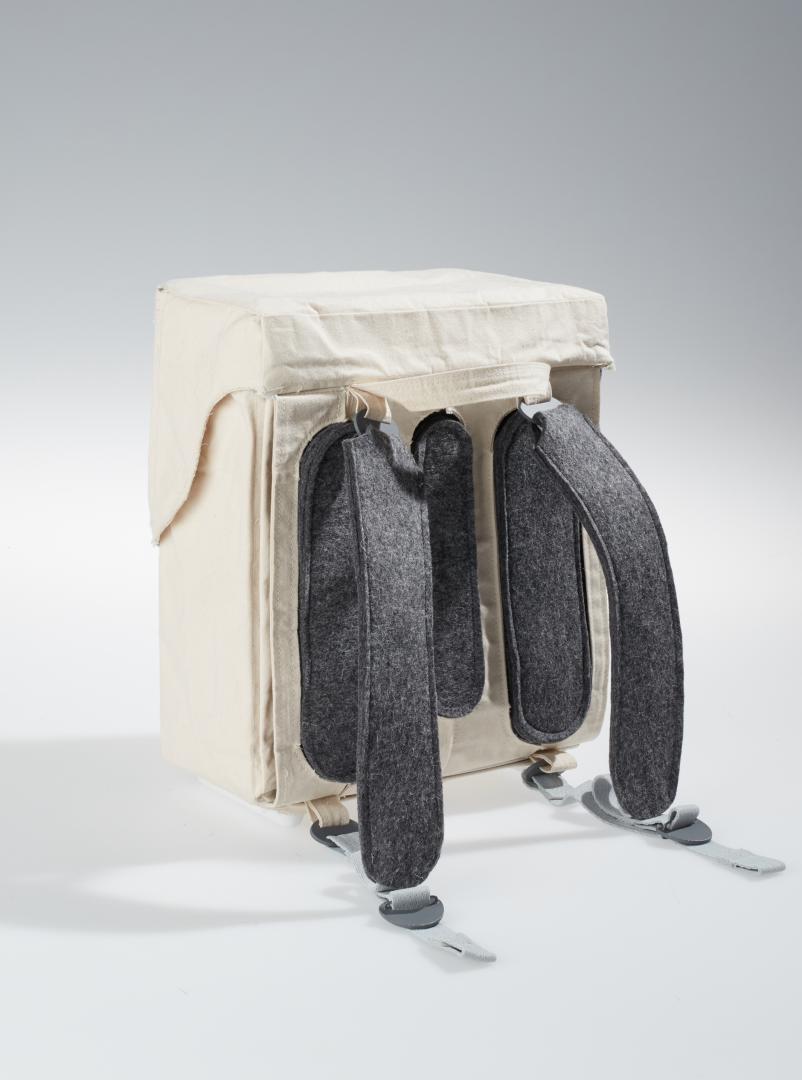Loopy
Basic information
Project Title
Full project title
Category
Project Description
Loopy is a school bag and a structural intervention into established products patters.
Since backpacks consisting of up to hundreds firmly attached parts, mostly plastics, they can not be recycled but get burned in the end of their life.
In order to counteract this phenomenon of unecological composition, this school bag is purely separable.
Using the pedagogical moment of the primary school age, the backpack conveys to children that bags are only the sum of their parts.
Geographical Scope
Project Region
Urban or rural issues
Physical or other transformations
EU Programme or fund
Which funds
Description of the project
Summary
Loopy is a school bag and a structural intervention into established products patters. It is intended to support the progressive development of a circular product culture.
Since backpacks consisting of up to hundreds firmly attached parts, made from different materials, mostly plastics, they cannot be recycled but get burned in the end of their life.
In order to counteract this phenomenon of unecological composition, which is more prevalent in our product culture, this school bag is purely separable.
Using the pedagogical moment of the primary school age, the backpack conveys to children that bags are only the sum of their variable parts, and so defies the continuing trend of blackboxing.
Loopy is the first of many, belonging to a modular system, whose components can be combined to create various everyday bags.
The monomaterial segments shall rotate in advanced cycles of usage, to be used as effectively as possible.
To highlight the construction the bag is made from undyed fabrics. A colored version is in the making. Graphics will be provided by embroidery made from the same yarn material as the linked base fabric.
Key objectives for sustainability
The main problem this design is dedicated to is the unecological use of composites. As an example I designed a system of parts, which can be used to articulate different bags.
The background of this action is that bags are usually made from up to hundreds of different firmly attached parts. These parts on the other hand are usually made from different sorts of plastics like Polyester fabrics with Polyethylene coatings or ABS clippers sewed on Polyamid straps.
These Plastics are doing a great job, but only until the bag gets disposed. Afterwards none is able or willed to separate and recycle the different materials.
Therefore I designed the constructional components in a new way. Now they can be separated easily, now they can be used to form new bags from old parts on your own. Now they are made from monomaterials which can be recycled. It is about the reducing of used resources by reusing parts and therefore buying less completely new bags.
I am still partially using plastic parts since they are the right experts in some fields of application. But I also question the usage of non natural fabrics, coated with plastics by using natural coatings like wax.
To establish this new way of usage in the society I aimed to start with a school bag for primary school children.
Using the pedagogical moment of the primary school age, the backpack conveys to children that bags are only the sum of their variable parts, and so defies the continuing trend of blackboxing.
Key objectives for aesthetics and quality
The main focus on the experience lies on the modular construction. The children are able to build their own school bag. They can chose between curated models and add or displace parts in different colors.
By building it on their own they experience the general thought of modularity and learn that they can intervene into products. Therefore this project is also an empowerment.
The hereby used aesthetics are intentionally minimal. Therefore the bags are not pieces of fast fashion like they have been so far.
The aesthetic meets the functionality while assembling.
In conclusion the concept is a sustainable intervention into how we think of and how we use daily products and furthermore how we question our empowerment concerning matters like repairing and the afterlife of our products.
Key objectives for inclusion
This concept is exemplary in terms of a democratizing design. By learning how to use a bag you can change on your own, you also learn that products a principally only the sum of their parts.
Their magic is based on the design and constructural thoughts, on the aesthetics and on the emotional value you give an object on your own. But repairing or changing an object is always possible. Since products are designed in the style of unreadable and not understandable blackboxes, people think less about acting on their own. They rather buy new stuff and dispose the old.
By giving consumers the chance to change parts easily you empower them to buy less. That also means saving money, because you do not have to buy a whole new product, but only a part of it. Those parts can be also traded on second hand platforms, which makes them even more affordable.
In summary this ecological design is also a social design.
The disassembled product can be send flat packed to the costumer. This fact reduces costs and rises capacities compared to conventional school bags.
The price of the bag is supposed the same as usual.
Physical or other transformations
Innovative character
Everything in the concept is about the modularity. By bringing the understanding to the pedagogical age of school children, modularity will be established in the thinking of the society throughout all generations.
The same modularity is giving opportunities for self identity based on ecological reasons. It is saving costs for the consumer and resources for the whole world economy. Therefore it is combining social terms with ecological terms.
It is a win-win-win situation.

